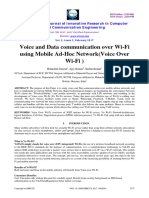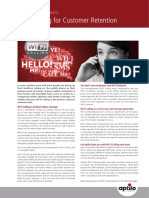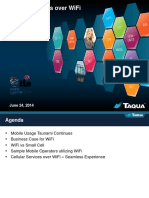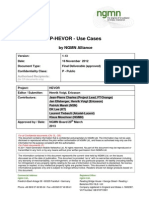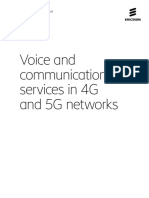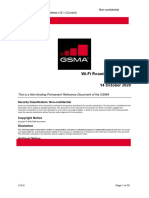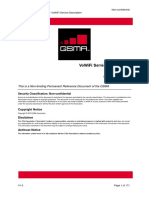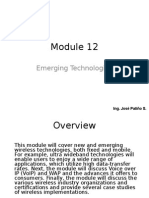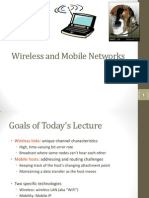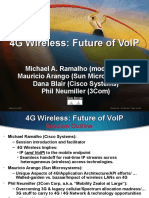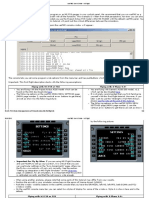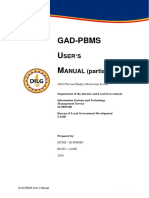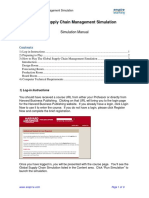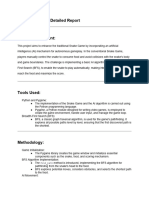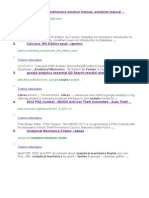VoWiFi Roaming
The scene is set for expansion
VoWiFi Roaming
simple complexity
T
he architecture required to support not only WiFi roaming, but also to
enable transparent transition between WiFi and 2G/3G and LTE networks
during a voice session is quite complex.
In this article we therefore need to delve a little deeper into the technology behind
Voice over WiFi (VoWiFi) and how the extension of the service to the roaming
environment introduces new challenges for operators and opportunities for
intermediaries, such as IPX providers, to make the overall ecosystem work
smoothly.
� w w w.hot tel e c o m.c o m w w w.c a t a l e y a .c o m
THE ECOSYSTEM reporting and billing. choose to connect directly, at least for some of (PGW) and then onward to the IMS core.
their major destinations.
The VoWiFi roaming value chain is composed The last (and perhaps also the first) link of When the call is initiated from an untrusted
of 4 key components, each with its own set of the chain is the user, who could either be the Nevertheless, even if a direct relationship is WiFi network, the device establishes an
opportunities, challenges and stakeholders: consumer or the enterprise customer, who developed between the home and the visited IPSec tunnel with the Evolved Packet Data
uses and pays for the service. network providers for WiFi roaming, normal Gateway (ePDG) in the home network, which
1. Device roaming arrangements with the distant visited then uses the S2b interface for integration
2. Connectivity While it is possible for a home service provider service provider, for LTE and 3G services, will with the PGW and the IMS core.
to establish all the arrangements with distant be operating in parallel. It will almost
3. Service enablement
WiFi network operators via multiple bilateral certainly involve the use of an IPX to 2. Authentication
4. Customer arrangements, the complexity of commercial enable and support those roaming Once the connection is initiated through
arrangements and contracts, location capabilities.
The device is the mobile device (SIM or non- the appropriate tunnel, the device will then
information, billing and settlement and quality
SIM smartphone or tablet) that has both WiFi communicate, using Diameter signaling,
optimization means that a hub and clearing But let’s get down to basics and review what
capabilities and a VoWiFi client that could be with the Policy and Charging Rule Function
house between the various players becomes a directly connected VoWiFi roaming network
either natively integrated into the main dialer (PCRF) and the Home Subscriber Server
highly preferable. architecture and call flow entails.
or an additional App. Without that capability, (HSS) in to home network to confirm policy
the VoWiFi service cannot exist. and approval for making VoWiFi calls.
By virtue of their role as the “glue” in Network architecture and call flow
international communications, wholesalers 1. Creation of event
Prior to initiating a call, the connectivity must 3. Call routing
and IPX providers therefore have a natural role
be assured by two different actors, the visited When roaming, customers can connect With the tunnel and authentication in place,
to play in providing international connectivity
WiFi Network Provider through which the to either the mobile network (LTE, 2G and the device is now communicating directly
and transport. However, some can also play
mobile device is connected (either a mobile 3G) or a WiFi network. When connecting with the core IMS network of the home
the role of hub and clearing house and become
operator’s WiFi network or a WiFi hot spot) and to WiFi, there are two possible scenarios: service provider. Voice calling can now be
central to the whole process.
the backbone internet provider, which ensures connecting to what is called a trusted WiFi handled by that network (with voice SIP
that the communication is transported back to network (if owned and managed by the signaling) and the media can be routed via
the home network for processing and routing. mobile operator that the user is subscribed the tunnel over the public internet to the
THE TECHNICALITIES
to) or an untrusted network (if owned and home network.
Next in the chain is the service enablement, managed by a WiFi hot spot provider).
While the hub and clearing house is a clear
which encompasses the authentication of the requirement for the initial WiFi connection and Calls from the device to the home network
user as being able to make VoWiFi calls, the In the case of WiFi roaming, most of the WiFi itself are directly terminated in that network,
ongoing usage, VoWiFi has been designed to
analysis of the call or session data to enable networks are considered to be untrusted while other calls are routed onward to their
work directly with the home service providers’
routing and call termination and, finally, and will be treated as such, unless the destination. In the case of a traveler calling
network, and some mobile operators will
visited WiFi network is owned by a mobile a colleague in the visited network, the voice
operator which is in the same mobile group call and media will trombone through the
VoWiFi Roaming value chain as the home network operator. home network back to where it started
1 2 3 in the visited network, which could add
Value chain Device Connectivity
Service 4
Customer
From an architecture point of view, when a significant latency to the call.
enablement call is initiated over a trusted WiFi network, a
Visited Hub & Home SaMOG tunnel is used to reach the Trusted This issue and potential solutions (through
Mobile Internet
Constituents device
Tablets WiFi
backbone
clearing Service Consumer Enterprises Wireless Access Gateway (TWAG) within the use of an IPX provider as a VoWiFi
network house provider
the Evolved Packet Core (EPC) of the home roaming hub) will be discussed in the next
Authenticate, connect service provider. From there on, the 3GPP article in this series.
Role Initiate call Collect and transport Use
and bill S2a interface is used to integrate the EPC
with the Packet Data Network Gateway
Source: HOT TELECOM
3 36 0 ° V I SI O N VoW iFi 4
� w w w.hot tel e c o m.c o m w w w.c a t a l e y a .c o m
4. Monitoring could be congested or of low quality. While some incremental network capabilities) • Back and forth of calls to the visited
The device is made aware of approved this is a complex issue to solve, monitoring in its vicinity. Furthermore, depending network and countries surrounding
WiFi access points in its vicinity via of the voice session itself can give good on the roaming plan offered to the end it, with incremental latency and
communication with the Access Network information about the performance of the user, different billing arrangements will be associated issues
Detection and Selection Function (ANDSF) underlying infrastructure, and as we will see triggered by the handover between WiFi • Difficulty defining the optimal WiFi
server and it is continually monitoring the in the next article, is a function that an IPX and cellular and vice versa. point to access, based on quality,
radio signal power it is receiving. It is also provider could perform to optimize quality of congestion and availability
monitoring the strength of the public service experience. 6. Clearing, billing and settlement
wireless options (2G, 3G and/or LTE). As mentioned above, during a call via a Security and Accounting
5. Handover WiFi access point, the billing of the end user • Intricacy of managing selection,
But nothing in this architecture is actually As the customer moves around, or as the will take place according to the tariff set for authentication and connection to
monitoring IP network congestion or quality of the network it is connected to VoWiFi calls by the home network. Although appropriate WiFi access points
comparing the performance of the WiFi varies, depending on the policy established termination charges may be required for
network against the cellular network’s by the home service provider, the device will onward routing of the call from the home • Challenges supporting emergency
quality to determine which will provide connect to alternative WiFi access points network, there are no voice related charges services and locating the caller in case
the best quality of experience. The only and maintain the voice call during the payable to the visited network. Data usage of crisis
characteristic which is monitored is the transition. on the WiFi network will be settled (probably • Complexity of meeting lawful intercept
strength of the signal. via the Hub). requirements
If no suitable available WiFi points are • Ensuring the security of customers’
Nonetheless, in real life, it is very plausible that present, the device can connect via the However, when the call migrates to a 2G/3G personal information
even if a network provides a strong signal, it public network (LTE or 3G or 2G with or LTE connection, the operators involved
will settle for that “new” call using their
agreed roaming rates and the end user Access and Hand-over
VoWiFi roaming network architecture may or may not see an incremental charge • Managing complexity of hand-off
on their bill, depending on the roaming between WiFi and cellular network in a
Abbreviations
package they have chosen. roaming environment
2G/3G network
CS: Circuit Switch
SGSN
ePDG: Evolved Packet Data Gateway • Managing accounting and settlement
HLR: Home Location Register
ISDN/ CS HSS: Home Subscriber Server for WiFi connection charges
PCRF: Policy and Charging Rule Function THE CHALLENGES
3GPP radio
PGW:
SGW:
Packet data network gateway
Service gateway
• Managing settlement of voice calls
Evolved Packet Core (EPC)
access
VoLTE network
SGSN: Serving GPRS support node
TWAG: Trusted Wireless Access Gateway The implementation of VoWiFi roaming when a call transitions to a 2G/3G or
SGW does not come without its challenges, as the LTE connection
LTE bearer S5/S8 complexity is amplified by the many potential
players now part of the solution, and as quality Now that the scene is set, and the required
of service is increasingly on customers’ mind. basic architecture is clear, the final article of
Carrier WiFi network (trusted)
Some of the challenges that mobile operators this series will investigate options for resolving
SaMOG tunnel
TWAG PGW HSS PCRF HLR
need to tackle, if they want to support VoWiFi, some of these issues.
S2a
while optimizing their customers’ quality of
Non-3GPP
radio experience include: With continued technological advancement
access
WiFi hot spot network (untrusted) in real-time monitoring and control, the use
ePDG Home network control elements Quality of intelligent applications can enable new
iPSec S2b • Loss of quality of service control as the solutions to help tackle these challenges and,
voice is carried over the public internet as we will discuss, IPX providers have a central
via many possible access points role to play in this equation.
Visited Network Home network
5 36 0 ° V I SI O N VoW iFi 6
� w w w.hot tel e c o m.c o m w w w.c a t a l e y a .c o m
ABOUT THE AUTHORS ABOUT HOT TELECOM
HOT TELECOM is one of the most innovative and creative research and
Isabelle Paradis
consulting companies, which has been providing International operators and
President, HOT TELECOM
carriers with specialized intelligence and advice for the past 13 years.
Isabelle has worked for 22 years in the telecoms
We understand the challenges faced by international carriers better than anyone,
industry. Her personal expertise ranges from Int’l
and have therefore developed a number of research and advisory tools and
Wholesale through to Business Strategy, and
expertise to mirror these needs, and provide the support any wholesaler requires
Marketing, along with extensive research and global
to survive and thrive in the current environment.
consulting experience.
To find out more about what we can do for you and how we can make the
She has written numerous articles and spoken at
difference in your success, contact us and it will be our pleasure to provide
many conferences on the challenges of international
you with tailored, real-life solutions that will meet your needs, challenges and
telecoms evolution in an all-IP world, a subject close to
objectives.
her heart.
For more information, please visit: www.hottelecom.com
Steve Heap
CTO, HOT TELECOM
ABOUT CATALEYA
Steve has a lifetime of experience in designing,
engineering and operating networks, both domestic Cataleya is a leader in IP networking innovation, with a strong track record in
and international. With leadership experience in developing and deploying next generation carrier grade session border controllers
small technology start-ups through to global service (SBCs), pushing the envelope in an all IP paradigm.
providers, he has deep experience in a wide range of
products, technologies and geographies. We develop and deploy intelligent networking technologies for network operators,
application service and 4G and LTE based MNOs. We believe that networking
He has the rare skill of being able to explain complex technology needs to be simpler, more intuitive and ready to enable an all-IP world.
technical issues in easily understood concepts and
uses that extensively in his consulting work with HOT When a customer chooses Cataleya’s technology they gain greater control over
TELECOM. their IP network with the operational intelligence to deliver new levels of quality of
service and experience.
For more information, please visit www.cataleya.com
7 36 0 ° V I SI O N VoW iFi 8

